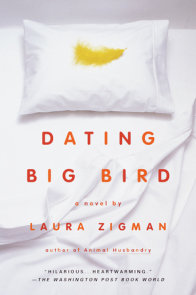READERS GUIDE
The questions, discussion topics, and reading list that follow are intended to enhance your reading group’s discussion of The Mare by Mary Gaitskill. In Gaitskill’s hands, the timeless story of a girl and a horse is joined with a timely story of people from different races and classes trying to meet one another honestly. The Mare is raw, heart-stirring, and original.Introduction
When Velveteen Vargas, an eleven-year-old Fresh Air Fund kid from Brooklyn, comes to stay with a family in upstate New York, what begins as a two-week visit blossoms into something much more significant. Soon Velvet finds herself torn between her host family—Ginger, a failed artist and shakily recovered alcoholic; and Paul, a college professor—and her own deeply tormented mother. The one constant becomes Velvet’s newly discovered passion for horse riding—and especially for an abused, unruly mare named Fugly Girl. A stirring and deeply felt novel, The Mare is Mary Gaitskill’s most poignant and powerful work yet—a stunning exploration of a girl and her horse, and of the way we connect with people from all walks of life.Questions and Topics for Discussion
1. Kirkus Reviews writes, “Gaitskill takes a premise that could have been preachy, sentimental, or simplistic—juxtaposing urban and rural, rich and poor, young and old, brown and white—and makes it candid and emotionally complex, spare, real, and deeply affecting.” How does Gaitskill manage to do this?
2. Why do you think the book opens with an epigraph from National Velvet? Why do you think Gaitskill refers to another famous horse book/movie? What does “intolerance” have to do with this book? And why do you think she named one of her main characters Velvet?
3. Why this title? Is Ginger The Mare as much as the horse is? Is Velvet’s mom also the mare? “‘My mare,’ like ‘mah mere’ or ‘ma mère’” (p. 99).
4. Describe the structure of the novel. Why do you think there are no chapters, just short sections interweaving different voices together? What is the effect on you as a reader to hear Ginger’s and Velvet’s perspectives, sometimes on the same events or subjects? Do you think this makes the novel a more compelling, more personal story? What effect do the various viewpoints and voices have on your reading experience?
5. Describe the home environments of Velvet and Ginger. How and why are they different? How are they similar?
6. Describe Velvet’s relationship with her mother. How does it compare with what we learn of Ginger’s relationship with her mother and sister?
7. Compare and contrast Velvet’s friendships with the other girls in her class with Ginger’s relationships with the other women in the novel. How and why are both Velvet and Ginger outsiders? How have both of them “created ways to keep others at a distance” (p. 10)? How are both rootless?
8. How do Velvet’s stereotypes of “rich white people” and Ginger’s stereotypes of inner-city kids evolve over the course of the novel?
9. Why do Ginger and her husband fall for the Fresh Air Fund brochures? “It was sentimental and flattering to white vanity and manipulative as hell. It was also irresistible” (p. 14).
10. Why is Ginger enchanted by Velvet? “Her presence made everything special” (p. 55).
11. After Fiery Girl accepts her, how is Velvet enchanted by the horse?
12. How is Pat different from other horse trainers? Do you like her style and way with horses? Contrast her methods with Beverly’s.
13. How does Ginger’s past haunt her present? The abusive boyfriend? The drinking? When do the two coincide and meet her directly in the present?
14. Describe Velvet’s relationship with Fiery Girl. Why do the two gravitate toward each other? What does each get from the other?
15. Cosmopolitan magazine said, “Gaitskill’s clear, raw prose rips open notions of race, class, age, and what it means to love something greater than yourself.” How does the author open up notions of race, class, and age?
16. Did you find The Mare a hopeful novel? Was it depressing? How could it be both?
17. There are numerous instances of Velvet describing people as being like horses. Reread those passages and discuss: “We were moving like the horses” (p. 185); “This angry was big and warm like a horse” (p. 196); “They get beat down and locked up but still, when they run, nobody can stop them” (p. 288).
18. Describe Velvet’s relationship with Dominic. How does it contrast with Ginger’s relationships with men? Despite their age difference, are there similarities in their relationships with males?
19. Why is Velvet’s mother so opposed to her daughter riding horses? How do you think she feels at the end of the novel?
20. Ginger thinks at one raw point with Velvet, when she wonders if she’s doing any good in the girl’s life, “Maybe they really are different from us. More violent, more dishonest—nicer in some ways, yes, warm, physical, passionate . . . Everybody was right. I’m racist. At least now I know.” Why does she think so? How do you feel about the way race plays into the novel? How does Ginger try to connect with this girl from another background? How does she connect and how does she misstep?
21. “I can’t even be her pretend mother. I give in. I agree. I’m over. It is what it is. But I can still get her on that fucking horse. I can help her win” (p. 452). Discuss the significance of these lines spoken by Ginger in the context of the entire novel.
22. How does the author deal with Velvet’s preteen desire, evolving sexuality, and falling in love? How does she juxtapose it with Paul’s infidelity and Ginger’s fleeting interest in an abusive ex-boyfriend?
23. How does the author capture the energy and excitement and anxiety of horseback riding?
24. What do you think of the ending of The Mare?






















